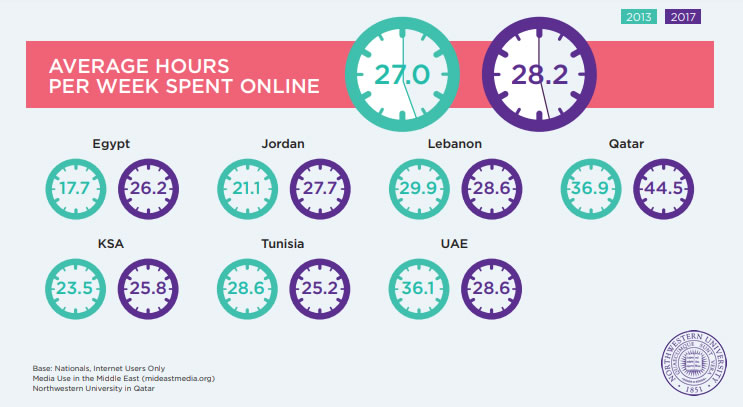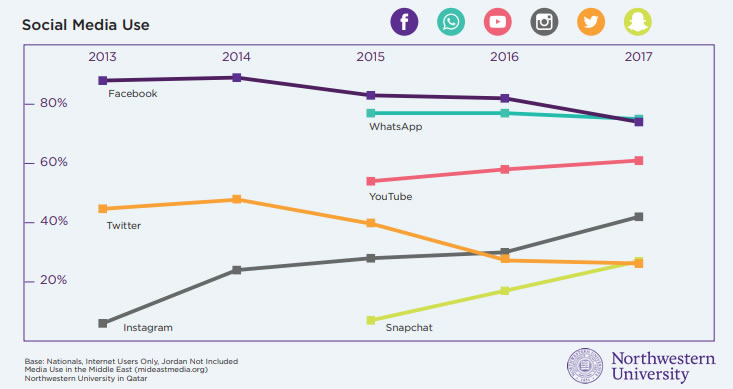Media Use in the Middle East: A Five-year Retrospection, 2018 | Northwestern University in Qatar
| Middle East
Internet penetration has increased in all countries in the Middle East Region since 2013. Lebanon grabbed the highest uplift (from 58% in 2013 to 91% in 2017). There is also a tremendous change in media consumption as internet expansion is significantly affecting other media use, with fewer nationals are now watching TV, listening to the radio, or reading magazines and newspapers. Smartphone became the main source to connect to the internet in the MENA region with a rate of 97%.
Arm your strategy for targeting the Middle Eastern internet consumers with unambiguous behavior is driven intelligence and myriad of insights.
Internet Use in the Middle East
- Arab nationals in the seven surveyed countries spend 28.2 hours a week online on average, up slightly from 27 hours a week in 2013.
- While in 2013 most of Arab nationals used the internet mainly to check email, 97% used the internet to get messages on direct/instant messing services in 217, with 83% of them do so daily.
- In 2013, internet users primarily went online for news, but in 2017 comedy has surpassed news as the primary online video content viewed.

Figure Show the Average Time Spent Online Per Week in the Middle East (2017 Vs. 2013)
Social Media Use in the Middle East
- In 2013, Facebook was the undisputed king of social media platforms among 83% of Arab nationals but in 2017 the figure slipped down to 74%, with declines in all countries except Egypt.
- WhatsApp was used by 77% of internet users in 2015 and stayed steady at 75% penetration in 2017. It reached its lowest rate in Tunisia (17% in 2015 vs.10% in 2017).
- Instagram and Snapchat have gained popularity in all Arab countries. They achieved the strongest penetration in the Gulf countries. (Instagram: 70% in Qatar, 68% in UAE & 43% in KSA) – (Snapchat: 64% in Qatar, 51% in UAE & 51% in KSA).

Figure Shows the Penetration of Most Used Social Media Platforms in the Middle East Over Five Years
Methodology:
Over five years, Northwestern University in Qatar has surveyed over 34,000 nationals via face-to-face interviews and on the phone, covering between six to eight representative countries each year across the Middle East (Egypt, Jordan, Lebanon, Qatar, KSA, Tunisia, and UAE). This report focuses on trends over time, primarily comparing 2013 data with 2017, and 2014 data with 2016.






